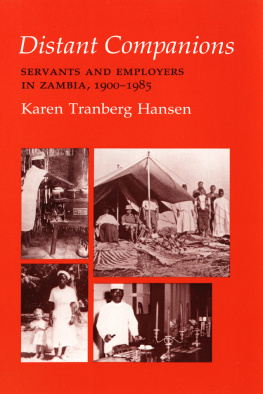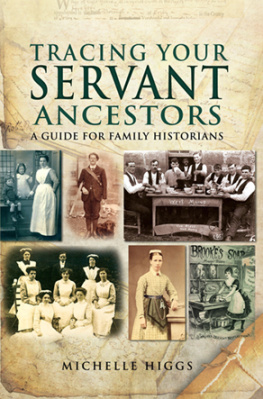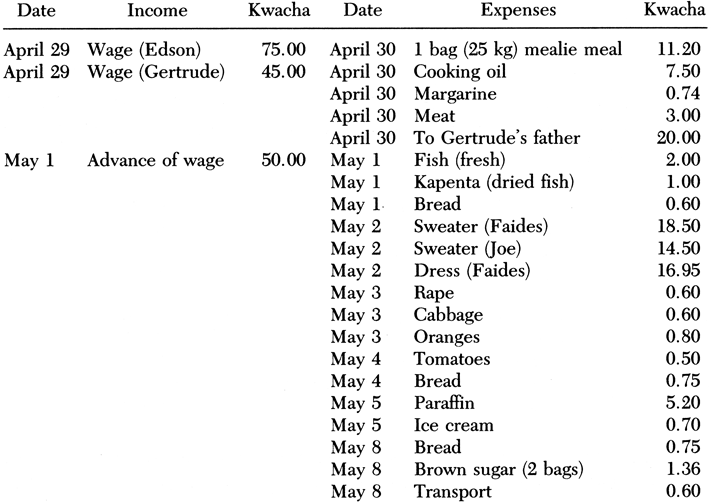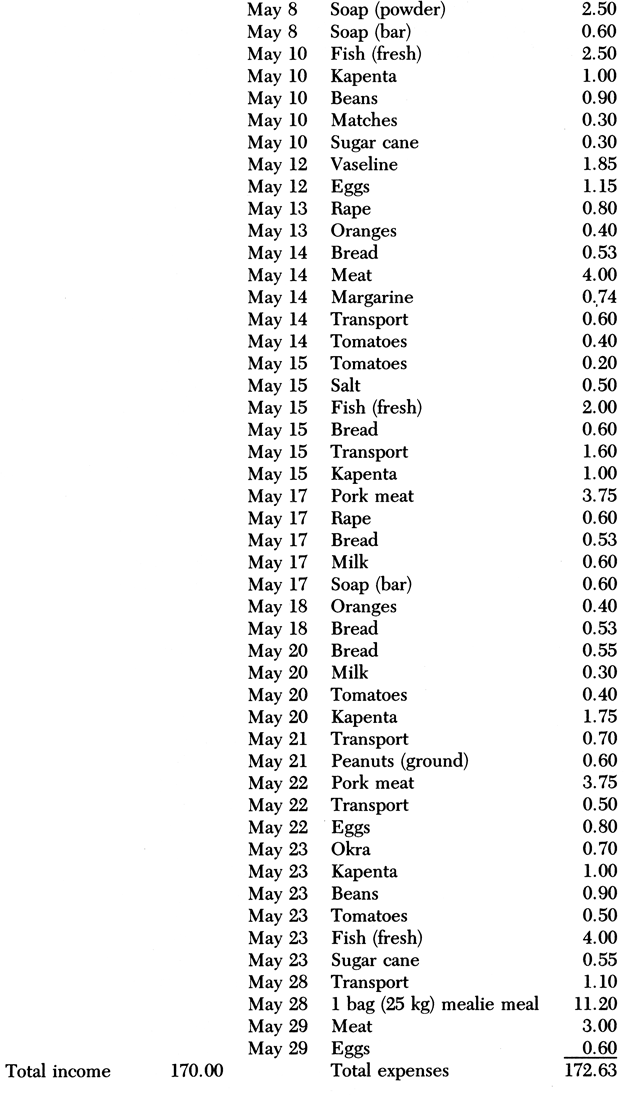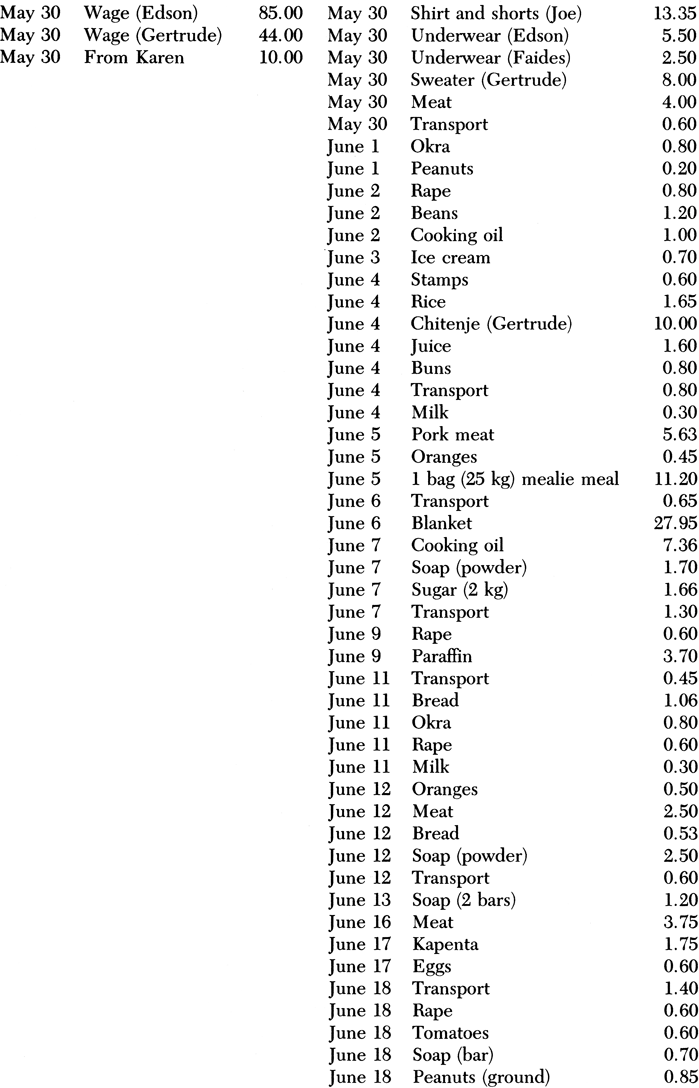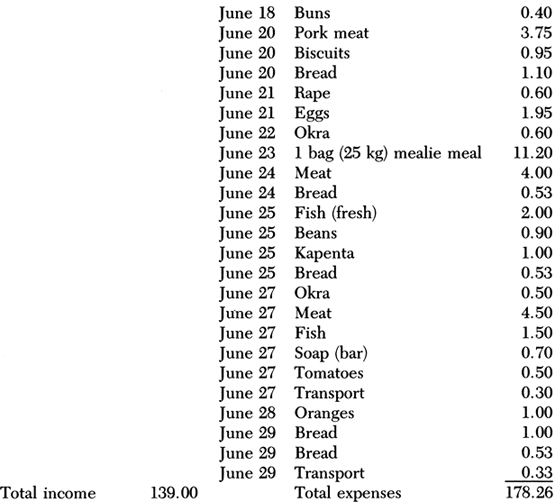Abbreviations
The following abbreviations have been used in the notes:
| NAZ | National Archives of Zambia |
| NAZIM | National Archives of Zimbabwe |
| PRO | Public Records Office, England |
Appendix 1 Servants Wages
I carried out a regression analysis in order to explore the impact of several factors on the monthly wages paid to servants. These factors were: ethnic/national background of the employer; the employers work, or rather the employment sector he/she was occupationally engaged in; the length of time he/she had lived in Zambia; the servants sex; and his or her age. I first ran separate regressions for each of these factors, that is, for each of the independent variables, using dummy variables in the first two regressions (to code for the qualitative ethnicity and type of the employers work). Dummy variables are simply 1, 0 type variables that code for the presence/absence of the qualitative factor of interest. If a qualitative variable has, say, 5 categories, as in the employers ethnicity variable discussed below, then the variable is coded using four 1, 0 variables, leaving out one category to serve as the reference" category for that variable, against which the other dummy variables can be compared. The coefficient for the dummy variables indicate the size of the difference between each category and the category to which each is compared, that is, the omitted reference" category. I then ran a multiple regression to show the impact of all the variables considered together.
The ethnicity/national background variable was coded using dummy variables for each of the following categories: Zambians; Asians; Coloureds; others (Afro-Americans). The omitted reference" category was the white employers category. The employers occupation variable was coded using the following set of categories after first omitting the category of persons
The square brackets placed around the sets of ethnicity and em ployers work dummies signify that these variables should be seen together as coding for these two qualitative variables. The numbers in parenthesis beneath each regression coefficient refer to the corresponding statistical significance level associated with each coefficient.
The adjusted R square (R2 =.397) for this multiple regression equation indicates that close to 40 percent variance in monthly salary is explained by this set of independent variables. The analysis shows the employers ethnic/national background to be the variable that most significantly influences the servants monthly wage level. That is, the magnitude of this set of coefficients is considerably greater than for the other variables in the equation. Compared with the omitted category of white employers, Asians pay lower wages (significance level.000); the rest of the employers pay slightly more than Asians, although still less than whites. The type of work the employer has (occupation) does not influence the wage paid to the servant in any statistically significant way. The servants age is statistically significant (.015), and the positive sign of the regression coefficient shows, perhaps not surprisingly, that the older the servant is, the higher is his/her wage. Comparing men with women servants, that is, looking at the coefficient of the sex variable, reveals that women tend to be paid less; and although the significance level (.08) is not significant at conventional levels (that is,.05), it indicates a nontrivial trend. The analysis also shows that even when the ethnicity/nationality variable is held constant, age and sex still have significant effects on wage levels.
. I am grateful to Malcom Dow for his advice in setting up this regression analysis and for his help in interpreting the results.
. The total sample size of the survey discussed in Chapter 6 is 187. In the regression analysis I excluded 21 interviews undertaken in servant-employing households living in flats. The sample size used in the regression is thus 168.
Appendix 2 Servants Budgets
To get an indication of how servants managed on their low wages, I sought to establish a minimum monthly budget. Two semi-skilled Zambian workers and their wives advised me concerning the bare essentials a monthly income had to cover.
A Minimum Budget
A minim um monthly budget for a household consisting of two adults and two children, excluding expenditures on clothing and support given to relatives, would feature the following items (prices given reflect approximate costs in 1984):
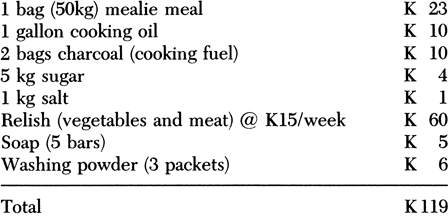
This budget, for a minim um of necessities, allows no discretionary expenses. Although it is a bare minimum, it requires a wage higher than that received by the majority of servants interview ed in my survey. They manage only with difficulty, as the two budgets I describe below illustrate. I asked two menservants whom I knew well to record their incomes and daily expenditures in notebooks I provided. I explained why I was interested in this aspect of their personal housekeeping, instructed them in how to record their transactions, and paid each of them K10 per completed month for the duration of the exercise. I asked occasionally, but I hoped not intrusively, if they remembered to keep their books during this period. It is likely that some expenditures were not recorded. Nevertheless, their budgets show clearly that their available incomes were hardly sufficient to coyer any but the most basic expenditures, if even those, in 1984.
Edsons Household Budget
Edson and his wife, Gertrude, worked in an expatriate Asian household, Edson as a full-time general servant working inside the house and on the grounds and Gertrude half-time in the kitchen to help out with the cooking and to replace Edson when he was not on duty. They lived on the premises and had two children, Faides and Joe, below school age; Gertrude was pregnant with their third child. The following budget lists Edsons report of income and expenditure over a two-month period, beginning at the time that Edson was paid his monthly wage.
Edson and Gertrude spent all their available money on daily household necessities and a few items of clothing. Their expenditures from late April through late May 1984 almost equaled their income, including an advance of Edsons wage for the next month. Their household ate a daily diet of maize porridge, nshima, and featured meat or fish approximately once a week. One pound of meat in 1984 cost between K3 and K5, depending on the cut, so they were by no means overindulging. Their diet features milk and eggs intermittently, and once in a while Edson bought biscuits or ice cream from a bicycle vendor for the children. Edsons wage was increased by K10 after the first month of his record keeping. Expenditures on clothing for the children (May 2) and them selves (May 30) strained their tight budget. These expenses could not have been afforded unless Edson used his access to advances of money from his employer. Gertrude bought a sweater at the end of May. May and June are the coldest months in Lusaka, where tem peratures sometimes fall below 0 degrees Celsius. Because of the cold, they also bought a blanket (June 6). In June, Gertrude bought a chitenje , a piece of brightly colored cloth that Zambian women wrap around the body like a skirt. Their expenditures for June exceeded their means. I suspect Edson during that month had gotten an advance of some 50 Kwacha from his employer; it would just about have balanced the budget for the late May to late June period.

